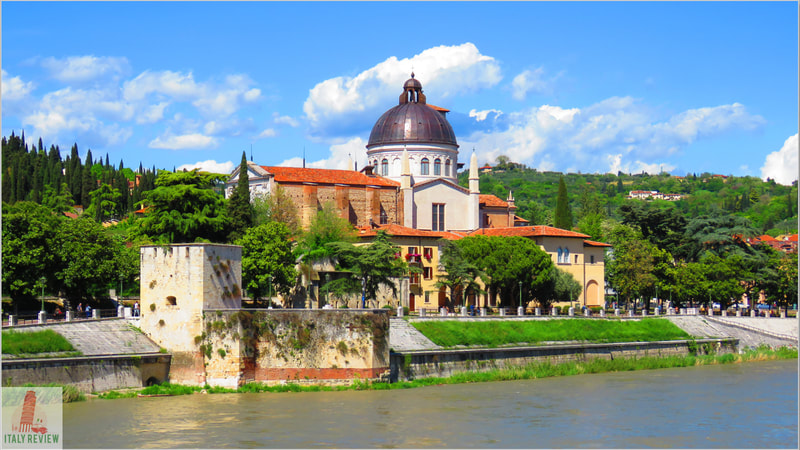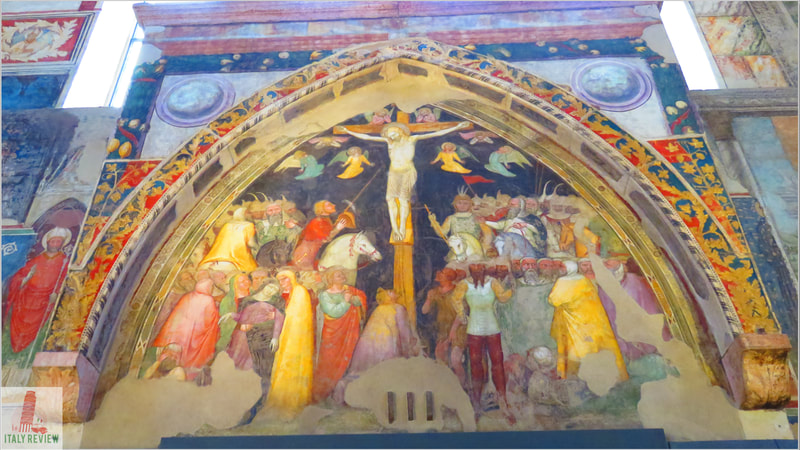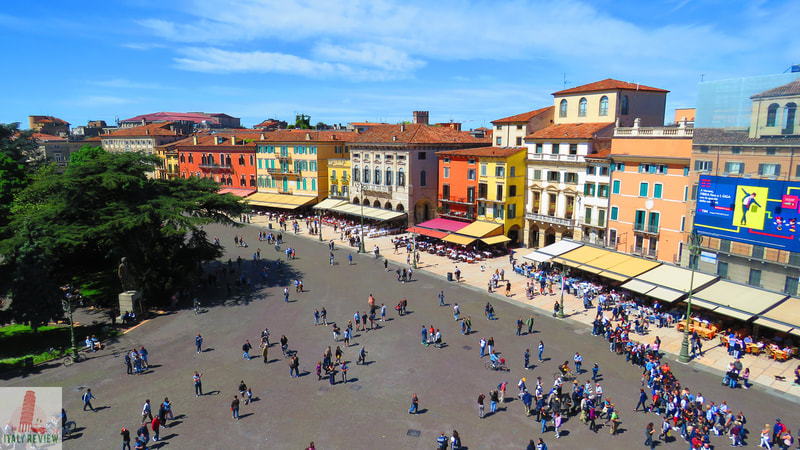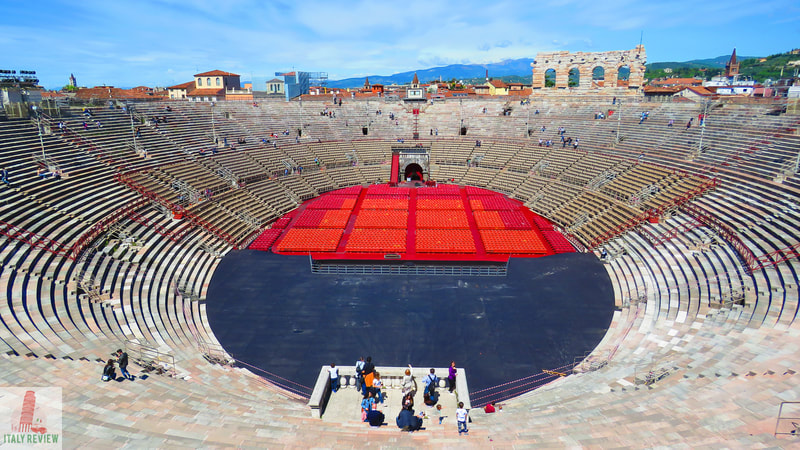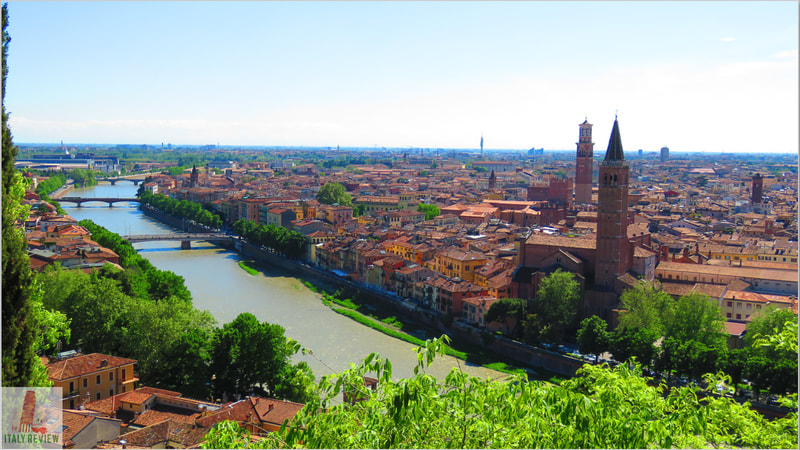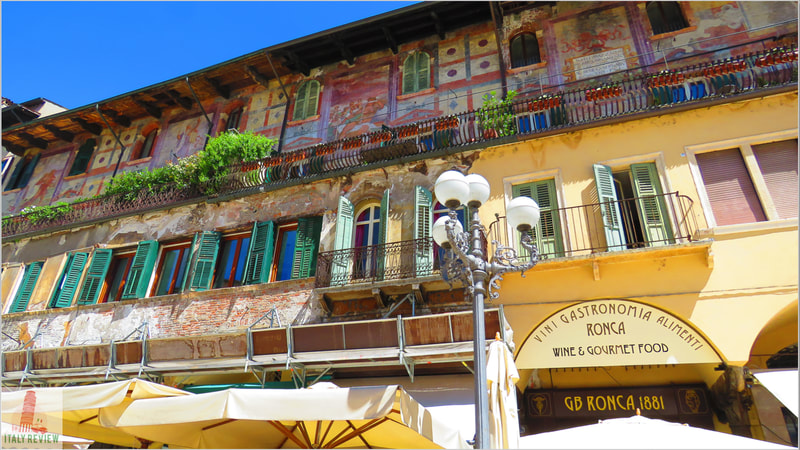Verona
|
Latest update: 15 February 2024
|
By Dion Protani
|
|
Before Shakespeare penned his Romeo and Juliet, the city of Verona was known for its ancient Roman monuments and for its legacy of landmarks left by the one-time ruling family, the Scaligeri.
However, that all changed in 1597 with one of the Bard's finest works set in Verona, which then became the City of Love. The compelling tale of the two lovers amidst the backdrop of the warring Montagues and Capulets has stolen many a heart, and there are no shortage of reminders on display throughout Verona. |
Related links
Verona: the City of Love
Verona, renowned for its romantic ambiance and rich history, is nestled in the heart of northern Italy's Veneto region. The city's most iconic landmark is undoubtedly the ancient Roman amphitheater, the Arena di Verona, which hosts world-class opera performances during the summer months. Nearby, the charming Piazza delle Erbe is lined with medieval buildings and bustling market stalls, offering a glimpse into daily life in Verona.
The city's historic center is a UNESCO World Heritage Site, featuring architectural treasures such as the intricate Gothic-style Duomo and the imposing Castelvecchio, a medieval fortress-turned-museum housing an impressive collection of art and artifacts. Visitors can also stroll along the scenic River Adige and cross the picturesque Ponte Pietra, one of Verona's oldest bridges.
Literature lovers will relish in the city's association with Shakespeare's tragic love story, "Romeo and Juliet." Casa di Giulietta, purportedly Juliet's house, draws countless visitors who come to see the famous balcony and leave love notes on the walls.
Just outside the city, the scenic countryside is dotted with vineyards producing the renowned wines of the Valpolicella region. The nearby Lake Garda, Italy's largest lake, offers opportunities for outdoor activities such as sailing, hiking, and wine tasting in charming lakeside villages. Verona's captivating blend of history, culture, and natural beauty ensures a memorable experience for all who visit.
The city's historic center is a UNESCO World Heritage Site, featuring architectural treasures such as the intricate Gothic-style Duomo and the imposing Castelvecchio, a medieval fortress-turned-museum housing an impressive collection of art and artifacts. Visitors can also stroll along the scenic River Adige and cross the picturesque Ponte Pietra, one of Verona's oldest bridges.
Literature lovers will relish in the city's association with Shakespeare's tragic love story, "Romeo and Juliet." Casa di Giulietta, purportedly Juliet's house, draws countless visitors who come to see the famous balcony and leave love notes on the walls.
Just outside the city, the scenic countryside is dotted with vineyards producing the renowned wines of the Valpolicella region. The nearby Lake Garda, Italy's largest lake, offers opportunities for outdoor activities such as sailing, hiking, and wine tasting in charming lakeside villages. Verona's captivating blend of history, culture, and natural beauty ensures a memorable experience for all who visit.
Comune di Verona
|
Province: Verona
Region: Veneto Population: 255,985 (source: ISTAT 1 January 2023) Size: 206 km² Elevation: 59 metres Must see: Verona Arena, Ponte Pietra, Castelvecchio Bridge Close by: Peschiera del Garda, Borghetto, Parco Sigurtà, Garda Recommended accommodation: Hotel Accademia |
UNESCO World Heritage Site
City of Verona
Year: 2000
City of Verona
Year: 2000
What are the most popular tours and activities in Verona?
- Verona Walking Tour: Explore the charming streets of Verona with a knowledgeable guide, visiting iconic landmarks such as Juliet's House, Piazza delle Erbe, and the Arena di Verona.
- Verona Wine Tasting Tour: Indulge in the flavors of the Veneto region with a wine tasting tour in Verona's surrounding countryside, visiting local wineries and vineyards to sample Amarone, Valpolicella, and other regional wines.
- Verona Opera Performance: Experience the magic of an opera performance at the historic Arena di Verona, one of the best-preserved Roman amphitheaters in the world, where you can enjoy classic operas under the stars.
- Verona Bike Tour: Discover Verona on two wheels with a guided bike tour, pedaling through the city's charming neighborhoods, parks, and along the Adige River, while learning about its history and culture.
- Verona Cooking Class: Learn the secrets of Italian cuisine with a hands-on cooking class in Verona, where you'll prepare traditional dishes such as risotto, fresh pasta, and tiramisu under the guidance of a local chef.
- Verona Segway Tour: Glide through the streets of Verona on a Segway tour, covering more ground and seeing highlights such as Castelvecchio, Ponte Pietra, and the Roman Theater in a fun and eco-friendly way.
- Day Trip to Lake Garda: Escape the city and explore the scenic beauty of Lake Garda on a day trip from Verona, visiting charming lakeside towns like Sirmione, Bardolino, and Malcesine, and enjoying activities such as boat tours and swimming.
- Verona Food Tour: Delight your taste buds on a food tour of Verona, sampling local specialties such as polenta, pastries, and Amarone wine, while discovering hidden gems and traditional eateries in the city.
- Verona Photography Tour: Capture the beauty of Verona with a guided photography tour, learning techniques and composition tips while snapping iconic landmarks such as the Ponte Scaligero, San Zeno Basilica, and Castel San Pietro.
- Verona Hop-On Hop-Off Bus Tour: See the sights of Verona at your own pace with a hop-on hop-off bus tour, allowing you to explore the city's attractions like the Basilica of San Zeno, Giardino Giusti, and Teatro Romano at your leisure.
Verona Gallery
Verona in-depth
Romeo and Juliet
Fictitious though the story may be, the site of one of the world's most famous love stories has captured the imagination of visitors ever since it was published. The famous balcony upon which Juliet called out to Romeo is one of the main visitor destinations in the city, along with Romeo's House and the Juliet's Tomb and Frescoes Museum.
Fictitious though the story may be, the site of one of the world's most famous love stories has captured the imagination of visitors ever since it was published. The famous balcony upon which Juliet called out to Romeo is one of the main visitor destinations in the city, along with Romeo's House and the Juliet's Tomb and Frescoes Museum.
Verona's Roman history
There is of course, much much more to Verona than the world of romance. The city was founded by the Romans and contains some of the best-preserved sights from antiquity on the whole Italian mainland. The elegant Piazza Bra is a square of wide boulevards, street-side cafes and park area with a lovely fountain at its centre, but stealing the limelight in one corner is the magnificent Verona Arena.
This is the icon of the city and ever its cultural hub; built in the 1st century AD, it was the setting for ancient ludi, a series of entertainments from horse races to religious festivals, with a capacity of up to 30,000 spectators. Nowadays, it stages open-air concerts during hot, balmy summer evenings; the dramatic setting creating an almost dream-like atmosphere.
The Arena is just one of several remarkable Roman monuments throughout the city. Verona was once surrounded by a city wall, some of which still exists, and punctuated by a series of gates. The city gates are a powerful reminder of Verona's heritage which is further embellished by the Gavi Arch and the Roman Theatre (separate to the Arena and with its own archaeological museum).
There is of course, much much more to Verona than the world of romance. The city was founded by the Romans and contains some of the best-preserved sights from antiquity on the whole Italian mainland. The elegant Piazza Bra is a square of wide boulevards, street-side cafes and park area with a lovely fountain at its centre, but stealing the limelight in one corner is the magnificent Verona Arena.
This is the icon of the city and ever its cultural hub; built in the 1st century AD, it was the setting for ancient ludi, a series of entertainments from horse races to religious festivals, with a capacity of up to 30,000 spectators. Nowadays, it stages open-air concerts during hot, balmy summer evenings; the dramatic setting creating an almost dream-like atmosphere.
The Arena is just one of several remarkable Roman monuments throughout the city. Verona was once surrounded by a city wall, some of which still exists, and punctuated by a series of gates. The city gates are a powerful reminder of Verona's heritage which is further embellished by the Gavi Arch and the Roman Theatre (separate to the Arena and with its own archaeological museum).
Sightseeing Verona
Verona flourished under the rule of the Scaligeri family (the name derived from their real name: Della Scala which translates as "of the ladder") in the 13th and 14th centuries. This period of rule accounts for a whole host of remarkable sights throughout the city including the unique Castelvecchio Bridge (sometimes referred to as Ponte Scaligero) and Castelvecchio itself, the castle from which the bridge connects the opposing banks of the River Adige.
One of the most attractive areas of Verona is the Città Antica, the old town which makes up the current city centre. A short walk from Piazza Bra, past the Arena, eventually brings you to the second most important square in the city: Piazza delle Erbe. The medieval market square is lined with restaurants and overlooked by the beautiful Case Mazzanti with their historic frescoes. Cast your eyes a little further to the sky and you find the Torre dei Lamberti, a medieval tower within which you can nowadays take a lift to the summit and enjoy the most spectacular views of Verona.
Piazza delle Erbe is flanked by a number of historic buildings and connects through to another beautiful square: Piazza dei Signori. At the centre of Piazza dei Signori you'll find a statue of Italian poet Dante who was exiled in Verona from Florence for six years from 1312. Surrounding Dante at the edges of the square are the beautiful Loggia del Consiglio along with various places to eat and drink.
Verona flourished under the rule of the Scaligeri family (the name derived from their real name: Della Scala which translates as "of the ladder") in the 13th and 14th centuries. This period of rule accounts for a whole host of remarkable sights throughout the city including the unique Castelvecchio Bridge (sometimes referred to as Ponte Scaligero) and Castelvecchio itself, the castle from which the bridge connects the opposing banks of the River Adige.
One of the most attractive areas of Verona is the Città Antica, the old town which makes up the current city centre. A short walk from Piazza Bra, past the Arena, eventually brings you to the second most important square in the city: Piazza delle Erbe. The medieval market square is lined with restaurants and overlooked by the beautiful Case Mazzanti with their historic frescoes. Cast your eyes a little further to the sky and you find the Torre dei Lamberti, a medieval tower within which you can nowadays take a lift to the summit and enjoy the most spectacular views of Verona.
Piazza delle Erbe is flanked by a number of historic buildings and connects through to another beautiful square: Piazza dei Signori. At the centre of Piazza dei Signori you'll find a statue of Italian poet Dante who was exiled in Verona from Florence for six years from 1312. Surrounding Dante at the edges of the square are the beautiful Loggia del Consiglio along with various places to eat and drink.
The River Adige and beyond
To the north of the city centre and lying close to the banks of the River Adige is Verona Cathedral, one of the most important religious buildings in the city but with some serious competition from the Basilica di Sant'Anastasia and the Chiesa di San Fermo Maggiore.
Heading north, away from the city centre, you can cross the River Adige on the ancient Ponte Pietra (Stone Bridge), built in 100 BC. The beautifully-preserved bridge allows you to cross over to an area called Veronetta which has its own special collection of sights. Once across the bridge, you can take the funicular railway up to Castel San Pietro for some further spectacular views of the city. Also, a reasonably short walk from here will bring you to one of the most beautiful gardens in Italy: Giardino Giusti.
To the north of the city centre and lying close to the banks of the River Adige is Verona Cathedral, one of the most important religious buildings in the city but with some serious competition from the Basilica di Sant'Anastasia and the Chiesa di San Fermo Maggiore.
Heading north, away from the city centre, you can cross the River Adige on the ancient Ponte Pietra (Stone Bridge), built in 100 BC. The beautifully-preserved bridge allows you to cross over to an area called Veronetta which has its own special collection of sights. Once across the bridge, you can take the funicular railway up to Castel San Pietro for some further spectacular views of the city. Also, a reasonably short walk from here will bring you to one of the most beautiful gardens in Italy: Giardino Giusti.
Verona Travel
Verona stands at something of a geographical crossroads, at the foot of the Alps to the north, a short distance east of Lake Garda and a short run along the motorway to the other great cities of Veneto: Vicenza, Padua and then Venice.
International travellers can make use of Verona Airport which is located just ten kilometres outside the city centre. It can also boast a prominent train station which stands at the confluence of several routes connecting a whole host of major cities. The city centre itself is largely pedestrianised while the areas around the periphery can generally be reached by buses.
International travellers can make use of Verona Airport which is located just ten kilometres outside the city centre. It can also boast a prominent train station which stands at the confluence of several routes connecting a whole host of major cities. The city centre itself is largely pedestrianised while the areas around the periphery can generally be reached by buses.
|
Public transport: Central train station, buses, trams
By car: Lake Garda - 29 mins (29 km), Venice - 1 hour 24' (121 km) |

